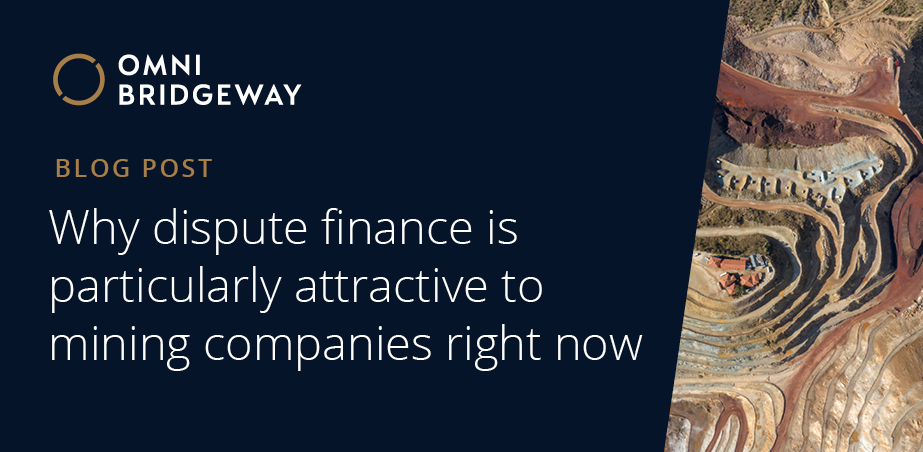Why Dispute Finance is Particularly Attractive to Mining Companies Right Now

- Author:
- Naomi Loewith
- Director of Strategic Partnerships - Canada, Investment Manager and Legal Counsel - Canada
Earlier this month, EY released a comprehensive study on the Top 10 Business Risks and Opportunities for Mining And Metals in 2024. This report highlights the significant potential for growth in the resources sector, while flagging risks that could make it hard to realize the industry’s full potential.
Three of these top risks demonstrate why dispute finance is an increasingly important tool for both junior and major mining companies. It can help both mitigate and address the challenges in the industry, and should be part of the toolkit of any explorer, operator or adviser.
Capital
The EY report notes that the global push for energy transition has created a need for mining and metals exploration, particularly in nickel and lithium. This exploration and development requires a significant increase in capital investment, but capital raised through debt and equity in 2023 remained steady, and this trend is expected to continue into 2024. Companies should therefore be considering alternative forms of accessing capital, including dispute finance.
Dispute finance allows a company to access capital secured against the expected proceeds of the company’s litigation or arbitration. Dispute funding is used by mining companies for investment treaty disputes with sovereigns, and also for commercial disputes such as royalty or joint venture disagreements. Banks and traditional investors are not comfortable assessing litigation and its potential returns, but dispute financers are. The capital is typically provided on a non-recourse basis. That is, if the legal case does not succeed, the funder loses its investment and receives no return. As a result, it is distinguishable from debt and equity; it is another route to capital.
Geopolitics
EY expects “an increase in government participation in mining, as well as more taxes, royalties and restrictions.” Given the high value of critical minerals, EY cautions that in some countries, these resources may be nationalized. In many countries that host strategic mineral deposits, this activity is already well underway. Mining companies may therefore need to commence domestic litigation or international arbitration to protect their investments and anticipated profits. This is not new – in 2022, construction and energy disputes accounted for 45% of registered cases at the International Chamber of Commerce (FN) – but is likely to grow in this geopolitical environment.
Advancing these legal claims can be time-consuming and expensive. Dispute finance can be used to pay for the legal fees, out-of-pocket disbursements and working capital to enable a company to pursue those claims. Sophisticated dispute financers can also provide strategic input and assist with collecting awards from sovereign entities.
Cost and Productivity
The report highlights that “inflation has impacted costs across the board, and it’s stronger and higher than we all anticipated.” At the same time, labour, decarbonization and royalty costs are increasing. As a result, there is considerable pressure to manage costs and improve productivity.
One way of addressing this risk is by taking certain costs off the company’s balance sheet. Legal fees and expenses are typically reported as a cost, with no corresponding profit until the case resolves. Partnering with a dispute funder enables the company to offload those costs to a third party, while sharing in the profits at the conclusion of the case. This has a positive accounting impact while helping the company demonstrate its commitment to cost efficiency.
Conclusion
The resources sector is facing numerous challenges but also significant potential. Dispute finance can be one valuable tool for digging through these challenges and mining the opportunities.